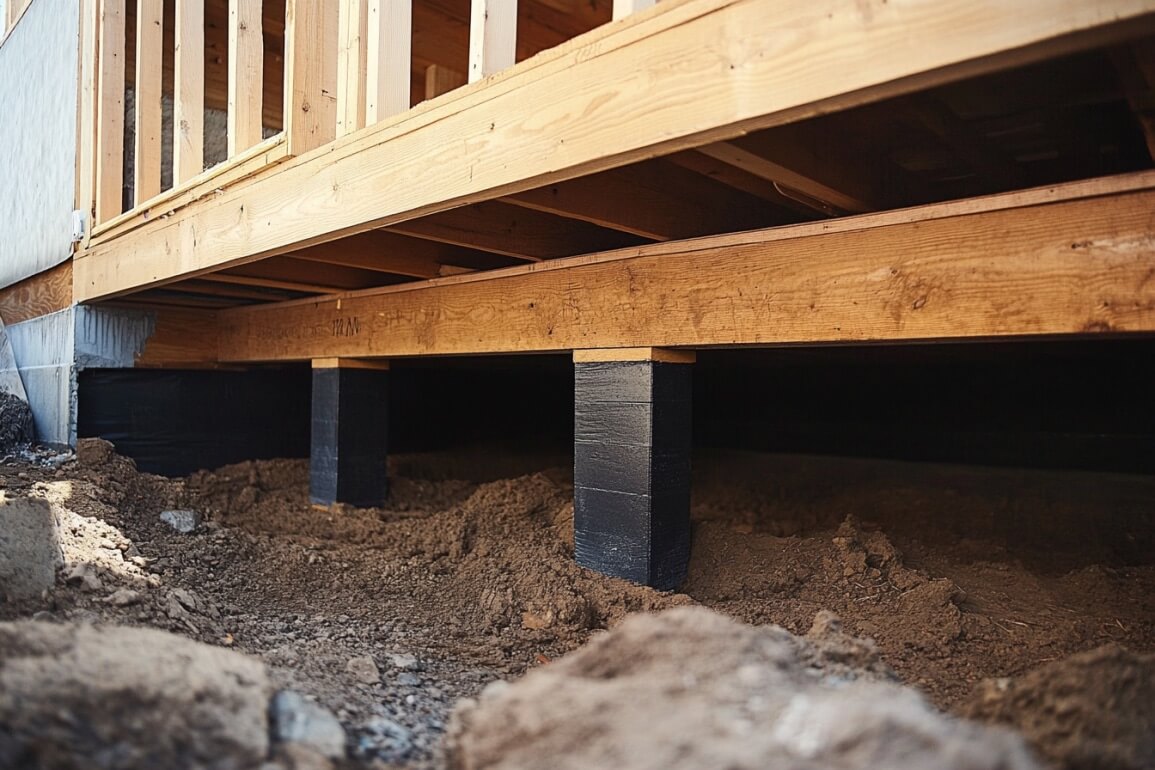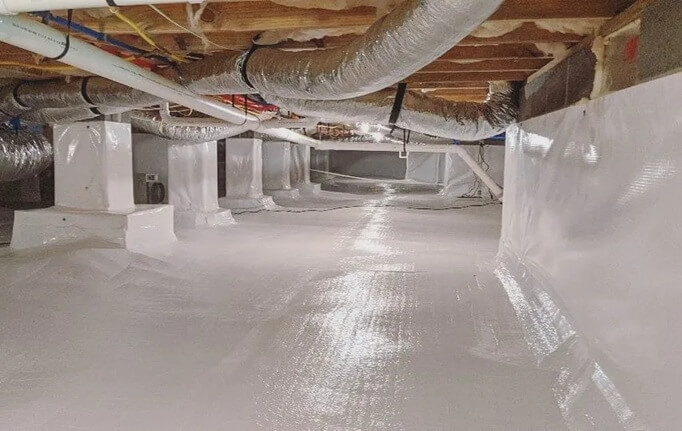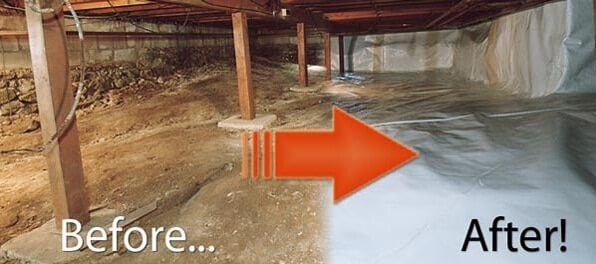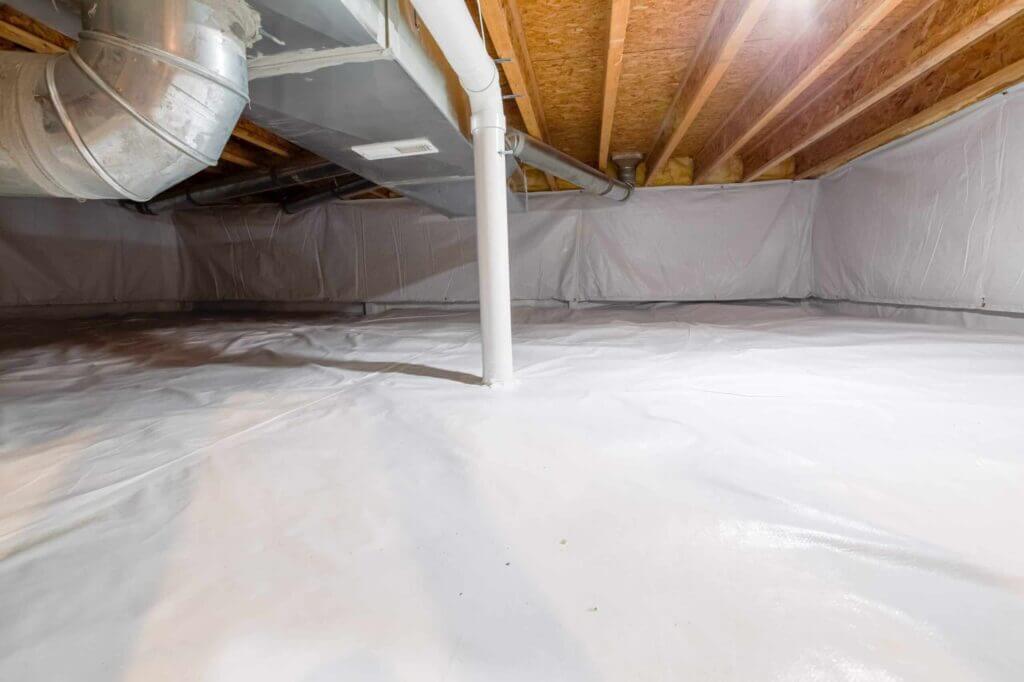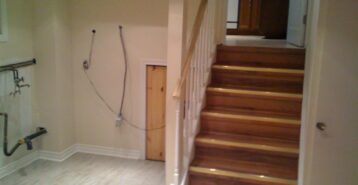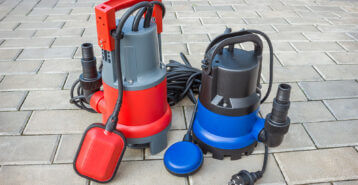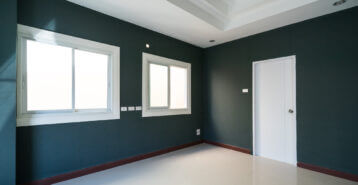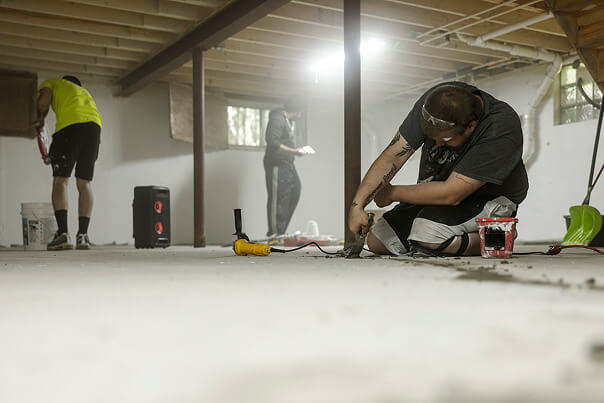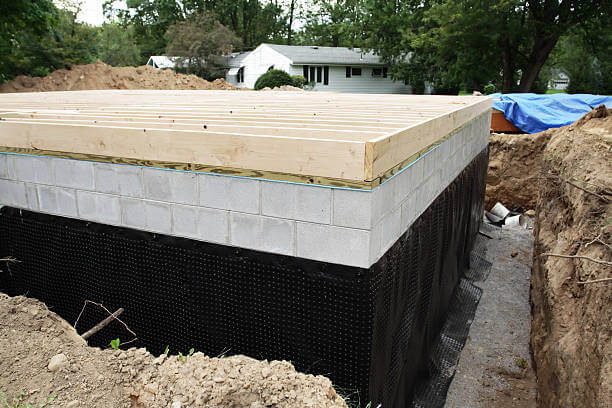Understanding Crawl Space Encapsulation
Your crawl space may be out of sight, but it plays a major role in your home’s foundation, energy efficiency, and air quality. When neglected, this area can trap moisture, attract pests, and circulate moldy air into your living spaces. Over time, that can lead to structural damage and health concerns.
Crawl space encapsulation is a preventive solution designed to stop those problems before they start. By sealing off the crawl space with a vapor barrier, insulation, and dehumidification, encapsulation keeps out humidity, blocks pests, and creates a clean, regulated environment under your home. Unlike crawl space repairs, which fix existing structural damage, encapsulation is about prevention and long-term protection.
➤ Learn more about the cost of crawl space foundation repairs in our guide.
What Is a Crawl Space?
A crawl space is a narrow, unfinished area between the ground and the first floor of your home. It provides access to plumbing, wiring, and HVAC systems without requiring full excavation.
Because of its location, however, a crawl space is especially vulnerable to moisture buildup, mold, and pests. Vented crawl spaces are even more problematic, since outside air and humidity can flow in freely. Without proper management, issues in the crawl space can spread to the rest of your home.
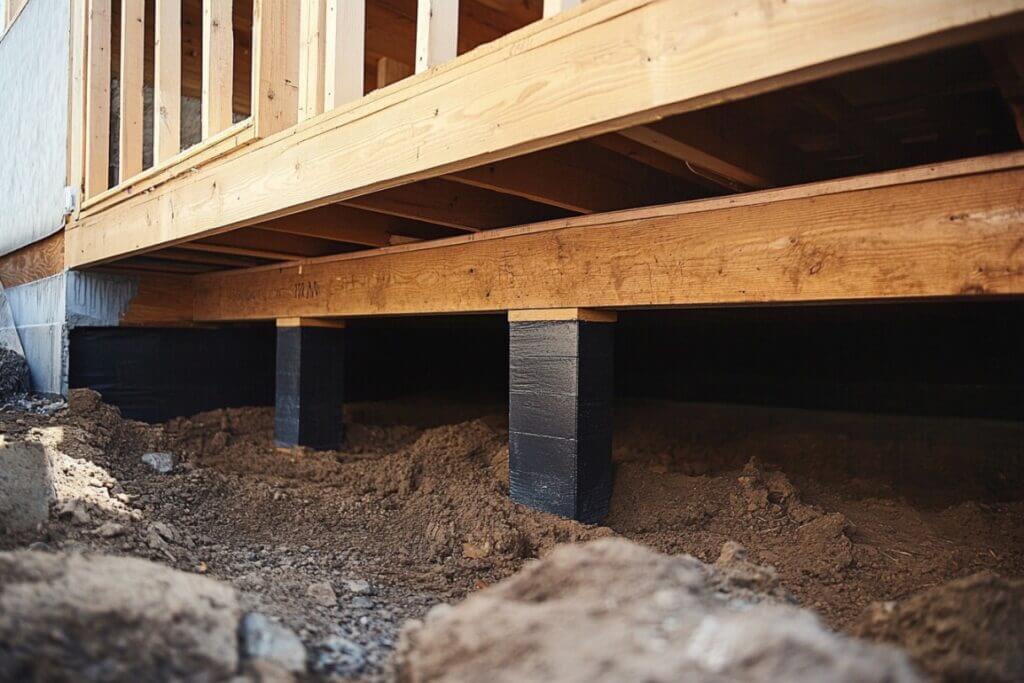
What Is Crawl Space Encapsulation?
Crawl space encapsulation is the process of sealing your crawl space to keep out moisture, pests, and outside air. It creates a clean, dry, and controlled environment that protects both your home’s structure and indoor air quality.
The encapsulation process usually includes three main steps:
- Vapor barrier installation. A heavy-duty liner is applied to the crawl space floor and walls to block ground moisture.
- Sealing vents and gaps. Openings that let in humid air, pests, or allergens are sealed off for an airtight barrier.
- Dehumidification. A crawl space dehumidifier keeps humidity levels stable and prevents mold growth.
Encapsulation is not a repair — it’s a moisture management system. If your crawl space already has rotting beams, sagging joists, or other structural issues, those repairs must be completed first. (See our crawl space repair cost guide for details.) Once repairs are done, encapsulation locks in long-term protection by preventing new problems from forming.
What Are the Benefits of Crawl Space Encapsulation?
Encapsulating your crawl space is an investment that protects your home’s structure, improves indoor comfort, and saves money over time. By creating a sealed, dry environment, encapsulation addresses multiple issues at once:
- Better air quality. Up to half of the air in your home comes from the crawl space. Encapsulation reduces humidity, mold spores, and allergens that can circulate into living areas — a major benefit for anyone with asthma or allergies.
- Lower energy bills. A sealed crawl space keeps out humid air and prevents conditioned air from escaping, helping HVAC systems run more efficiently. Many homeowners see 15% to 20% annual savings on heating and cooling costs.
- Stronger structural integrity. Moisture can weaken wooden joists and beams over time. Encapsulation protects these materials from rot and extends the life of your home’s foundation.
- Pest prevention. Termites, rodents, and insects thrive in damp crawl spaces. By sealing off vents and eliminating excess moisture, encapsulation makes the area less inviting to pests.
- Higher home value. Homebuyers and inspectors see an encapsulated crawl space as a sign of a well-maintained property, which can boost market appeal and resale value.
What Are the Drawbacks of Crawl Space Encapsulation?
While encapsulation delivers major benefits, it’s not the right solution for every home. Here are a few considerations to keep in mind before moving forward:
- Upfront cost. Professional encapsulation typically costs $5,000 to $15,000, depending on the crawl space size and condition.
- Ongoing maintenance. Dehumidifiers require regular cleaning and servicing to stay effective.
- Access limitations. Once sealed, the crawl space may be harder to access for plumbing, HVAC, or electrical work.
For many homeowners, the long-term protection outweighs these drawbacks, but it’s important to weigh costs and maintenance needs before deciding.
Is Crawl Space Encapsulation Right for Your Home?
Encapsulation is a smart investment for many homes, but it’s especially worth considering if you notice these warning signs:
- Moisture problems. Dampness, mold growth, or musty odors in your home often trace back to crawl space humidity.
- High energy bills. Drafts or air leaks from the crawl space can force your HVAC system to work harder, driving up heating and cooling costs.
- Pest activity. Crawl spaces with open vents or excess moisture often attract termites, rodents, or insects.
Encapsulation may not be necessary if your crawl space is consistently dry, well-ventilated, and free of pests. But if you’re dealing with recurring moisture, pests, or rising energy costs, encapsulation can provide long-term protection and peace of mind.
For a clear answer, it’s best to have a professional inspection. An expert can identify the source of the problem and recommend whether encapsulation, repairs, or a combination of solutions is the right fit.
What Is the Crawl Space Encapsulation Process?
Encapsulation is typically done after any needed repairs, ensuring the crawl space is structurally sound. A standard professional encapsulation project includes:
- Inspection and cleaning. First, contractors assess the crawl space for existing issues, remove debris, and prepare surfaces.
- Vapor barrier installation. Next, they apply a heavy-duty liner to the floors and walls to block ground moisture.
- Sealing vents and openings. Then, they close off vents and gaps to keep out outside air, pests, and humidity.
- Adding insulation. If needed, pros may insulate your crawl space walls or floors to improve energy efficiency.
- Dehumidifier installation. Lastly, a dehumidifier is installed to maintain proper humidity levels to prevent mold and condensation.
This comprehensive process transforms the crawl space into a dry, controlled environment that supports your home’s health and efficiency.
How Much Does Crawl Space Encapsulation Cost?
Crawl space encapsulation typically costs $5,000 to $15,000, depending on the size of the space, its current condition, and regional labor rates.
While the upfront cost can seem high, the long-term savings often make it worthwhile. Homeowners frequently see 15% to 20% lower energy bills, fewer repairs caused by moisture damage, and added resale value.
Encapsulation is best viewed as a long-term investment in your home’s structure, comfort, and air quality.
How to Maintain an Encapsulated Crawl Space
Once encapsulated, your crawl space requires minimal upkeep, but a few simple steps will help preserve its benefits:
- Get regular inspections. Check periodically for damage, standing water, or tears in the vapor barrier.
- Maintain your dehumidifier. Clean or service the unit as recommended to ensure proper operation.
- Check for pests. Monitor for signs of pests and address issues quickly.
With proactive maintenance, a crawl space encapsulation system can last 15 to 20 years or more, delivering long-term protection for your home.
Compare top-rated foundations pros in your area.
Read real homeowner reviews, explore qualifications, and view promotions. Modernize makes it easy to browse professionals and find one that will be perfect for your project.
